Amazon Pricing Strategy to Maximize Sales and Ensure Steady Profitability
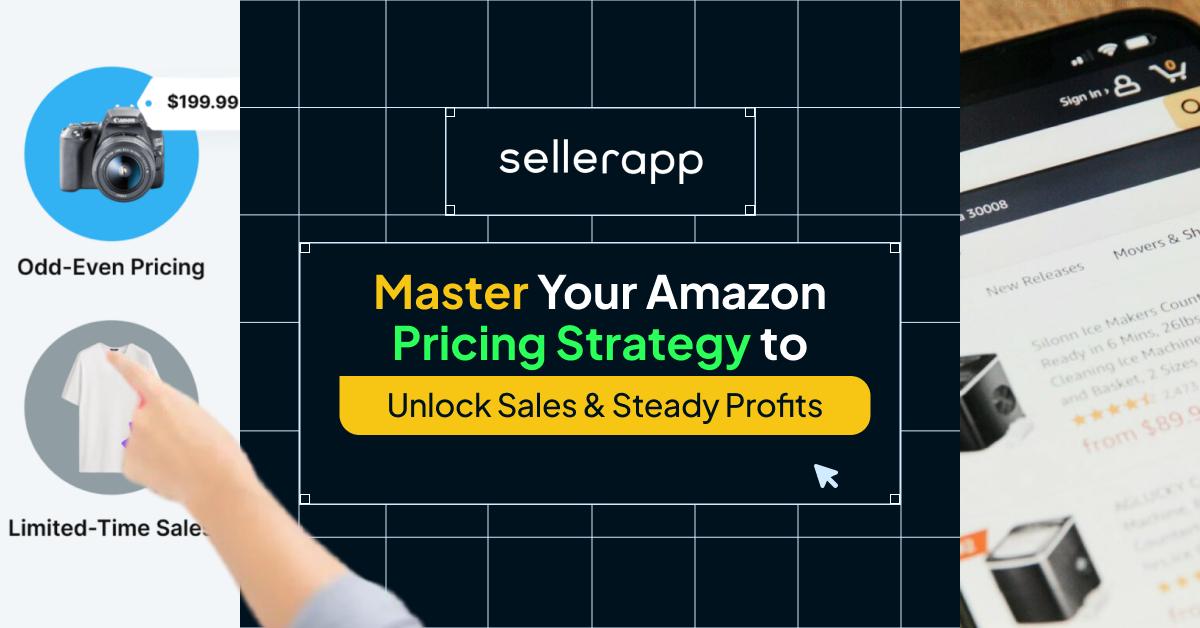
Crafting the correct Amazon seller pricing strategy goes beyond just numbers— it’s about unlocking your product’s full potential in a crowded marketplace. Unless you sell your products at a competitive rate, it will be hard to divert customers’ attention to your product, irrespective of its quality.
Moreover, Amazon, if you price your product too low, say goodbye to your sales, if you price it too high, you lose the Buy Box.
With an all-time high competition, coming up with the right Amazon pricing strategies for your Amazon business has become more essential than ever.
Businesses that effectively solve pricing and implement the correct Amazon pricing strategies maximize profits and gain a strong edge in the market. Price algorithms and apps have increased transparency, making it easier for consumers to compare products and prices.
For businesses, it encourages competitive pricing or calls for an Amazon pricing strategy analysis, ensuring they stay relevant in the market. On the other hand, inflation and supply chain disruptions drive higher costs for sellers.
Tired of the guessing game? Keep reading to influence product performance and boost your conversions.
A quick peek into the article:
- What is Amazon pricing strategy?
- How do sellers price items on Amazon?
- Why should you have a tailored pricing strategy?
- How to get your Amazon pricing strategies right
- The 4 types of pricing strategy for Amazon
- Other Amazon pricing strategies to build your brand
- Mastering the Buy Box algorithm to increase sales
- Let’s get practical with pricing your products
What is Amazon pricing strategy?
Amazon pricing strategies are developed to achieve the goal of offering customers the most competitive rates possible.
This is why emerging sellers find it hard to establish themselves in such a competitive marketplace. With demand fluctuating throughout the day, pricing shifts constantly, and so does visibility, depending upon the price fluctuations.
While these fluctuations can be challenging for sellers, they are a defining feature of a dynamic marketplace that focuses on keeping prices competitive, attracting more buyers, and driving sales.
If several sellers cater to the same audience and sell the same products, the only way they can sustain themselves is by continually offering the best deals, thus winning over the audience and, consequently, the Buy Box.
Apart from pricing, convenience is one of the many reasons that can help them stay ahead of the competition. It fuels trust, boosts sales, and locks customers into the Amazon ecosystem.
Meeting all the set standards and preparing an ideal pricing strategy for Amazon will eventually lead a seller to win the Buy Box, which brings a seller the most number of sales.
Amazon also considers shipping speed, seller ratings, and stock availability. This factors in as a condition to compete for the Buy Box.
Even if you fail to win the Buy Box due to intense competition and the pressure to stick to the Amazon pricing model, pricing smartly can still get you noticed. Products listed outside the Buy Box are ranked by total price (product + shipping) — meaning budget-friendly sellers always have a shot at winning the customer’s attention.
In Amazon selling, pricing isn’t just about profit — it’s about playing smart to earn visibility, trust, and long-term sales.
Amazon pricing strategies to avoid (To remain compliant with Amazon’s regulations)
- Misleading prices for products (to keep up with the Amazon dynamic pricing strategy)
- Elevating the price to a significantly higher amount compared to competitors.to keep up with Amazon’s pricing strategies.
- Setting higher prices to bundles (than the cumulative price of items) with an intention to dupe sellers.
- Unnecessary high shipping fee as a part of the pricing strategy for Amazon.
How do sellers price items on Amazon?
The Amazon pricing strategy analysis considers three main factors:
Intense Competition
In the Amazon marketplace, sellers are not only aiming for sales but for visibility. This is primarily due to multiple sellers constantly to grab the majority market share for the same product. Thus, Amazon sellers face significant pressure to maintain thin profit margins while still offering the best services. One undeniable aspect of having competitors is the fact that you can gauge their prices to offer an even more lucrative option to your audience, grabbing their attention.
Supply and demand
The repercussions of this phenomenon are something that we notice every day due to the fluctuations in Amazon pricing strategies. This is something you absolutely need to consider while understanding what is Amazon pricing strategy.
As a seller, you may not reduce the prices after a certain threshold, but you can offer fast delivery as an added value which may help you pull the section of customers without budget constraints, and the one home prioritizes convenience.
Costs and profit margins
Know your numbers well. Offer selling price only after factoring in every cost, from production and storage to shipping and Amazon fees. So we suggest opting for a repricer that would set lower and upper limits to these product prices as a support to your Amazon seller pricing strategy. As a result, it will neither overshoot, affecting the Buy Box eligibility, nor lower the price leading to price wars.
Why should you have tailored Amazon pricing strategies?
Tailored Amazon pricing strategies help businesses sell their product at incredibly optimal prices that not only generate profits but also ensure that businesses don’t leave any money on the table.
The optimal price is dependent on several factors, such as customer perception, market demand, stakeholder value, and much more. Sellers should be intentional when it comes to determining their pricing strategy for Amazon. Most importantly, they need to experiment to find what works best for them.
Here’s why Amazon pricing strategies are essential:
Survive the competition
Prices on Amazon change frequently, so strategic modulation of Amazon’s pricing model becomes an inescapable component of listing products. This is important in preventing the risk of losing to competitors who are also trying to beat you in the game.
Buy Box race
Amazon selling strategies require constant effort if you want to see orders pouring in. If you don’t aim for the Buy Box, you’ll see little to no sales. Since pricing is a major factor in Amazon’s algorithm, getting your Amazon pricing strategies right will land you the Buy Box. In this race, the most competitive pricing wins. Make more as you sell more.
Offering the lowest price may drive sales in higher volume, but it shouldn’t be at the cost of slashing your profit margins. Amazon pricing strategy is designed to get you sales while keeping profits intact.
Adaptation over competition
Pricing trends shift with seasons, demand, and competitor moves. But that should not dictate your abrupt pricing changes. Often, reactive pricing can do more harm than good. A proactive approach to finding the perfect Amazon pricing model will encourage you to adjust your products to the marketplace environment.
Note: Amazon dynamic pricing strategy can be reactive, but it’s usually more sophisticated and proactive.
As a result, abrupt decisions or sudden rise of prices may lead to price wars, so we recommend a tailored Amazon seller pricing strategy to maintain account health.
How to get your Amazon pricing strategies right
Customer, channel dynamics, competition, and business model are the core aspects while defining your Amazon pricing strateies.
Why these metrics, you ask?
These metrics help you prioritize your revenue goals that are not solely driven by competition or customers.
Along with that, here are a few tips to consider when developing Amazon pricing strategies for your Amazon business.
Define goals
Your Amazon seller pricing strategy varies depending on your business goals. Your goal could be to increase profit margins, expand to new geographies, or something else. Learn how these can influence your Amazon pricing strategies.
Costs associated with the product
To stay profitable, you must consider costs like shipping, manufacturing, and marketing. Ensure your selling price covers all these costs to prevent cutting down on your fixed profit margin. Having a fixed profit margin will help you predict the direction of your business.
Competition
Discount in pricing plays a major role in customer purchasing decisions. So studying competitors’ Amazon pricing strategies and dynamically monitoring prices are important in increasing your product sales and conversions.
Consumer insights
Understanding customer perception towards your product is critical. Track how they interact with your products and their sentiment towards them and similar competitors’ products on Amazon and any other ecommerce marketplace.
Unique Value Proposition
What is the gap that you’re trying to fill in the market? Take time to look at your competitors’ buyer personas to determine the attributes that are missing from their Amazon pricing strategies. Use these gaps to enhance your marketing strategies and elevate your brand.
Channel dynamics
Are you selling on a marketplace driven by discounts? Is the category that you are selling dominated by low-priced products? These are a few questions that you should consider when deciding your Amazon pricing strategies. Remember that Amazon matches the price of your product on any other ecommerce platform.
The 4 types of pricing strategy for Amazon
It’s important to price your product effectively and still make profits. Let’s look at different Amazon pricing strategies that you can use to scale your business on Amazon.
Dynamic pricing
Amazon dynamic pricing strategy is one where prices of the product listings automatically adjust itself based on external factors. It can be market conditions, competitor pricing, demand, or even different times of the day.
Amazon’s A9 and A10 algorithms or pricing tools automatically update prices for maximum benefits— be it in real-time or scheduled for later. As a seller, you can be assured that the price fluctuations are monitored and modulated without involving you round-the-clock.
Use Amazon’s Automate Pricing Tool to create pricing rules that dynamically change Amazon pricing strategy based on the Buy Box status or competition. Navigate to Seller Central > Pricing > Automate Pricing> Pricing rules.
When you should use
It is typically useful for time-sensitive products such as seasonal products and for high-competition products.
Amazon dynamic pricing strategy helps modulate prices according to inventory levels. Dynamic pricing can be of 2 types: Automatic rule-based pricing and Competitive pricing.
Here’s a pro tip. Combine Amazon dynamic pricing strategy with inventory strategy to develop a pricing strategy for Amazon. This means raising prices when stock is low and decreasing them to boost sales velocity when ads are underperforming or when stock is sufficient.
Automatic rule-based pricing
An automatic rule-based Amazon pricing model is used to adjust prices to align with competition and seasonal trends. You set up different pricing rules on Amazon Seller Central and track the sales. It’s a streamlined way of pricing your products, eliminating the manual process. This Amazon pricing model helps you configure rules like the maximum and minimum prices you want to set.
The Amazon third party repricing tools automatically update your product prices and help you maximize your return on investments.
When you should use
Opt for automatic rule-based pricing when you want control over the price ranges within your SKU. Furthermore, you can decide what SKUs to include for repricing. You can leverage rule-based pricing tools like SellerApp to determine even the smallest details.
Competitive Pricing
The competitive pricing strategy for Amazon is undoubtedly the foundation of success for most sellers. It’s not just about being the cheapest—it’s about playing to Amazon’s algorithm, which favors sellers who offer a fair price and operational excellence.
Track competitors using Amazon’s Price Dashboard or you can use SellerApp’s Product Intelligence tool.

You can also use Buy Box reports in Seller Central to monitor which SKUs are losing visibility.
When you should use a Competitive Amazon pricing strategy
A competitive Amazon pricing strategy is mostly adapted to win the Buy Box. Pennies don’t win the Buy Box; it’s won by trust— a trust that is gained from maintaining strong account health.
How can you maintain account health?
Checking consistent stock levels and reliable fulfillment alongside strategic pricing is of utmost importance. However, the real challenge is met while juggling all of this with planning a selling strategy.
That’s why top sellers don’t manually chase competitors— they automate price tracking with dynamic repricing tools. These tools set floors and ceilings that protect their margin while remaining algorithmically favorable.
Simply competing will not have you win this game. It’s to respond promptly and intelligently. Sellers who master competitive Amazon dynamic pricing strategy consider it as a boundary, to better gauge their capabilities so that they can pull back entirely based on real-time data and inventory risk.
That level of Amazon pricing strategy analysis brings clarity and transforms pricing from a reaction into a growth lever.
Algorithmic repricing
This type of Amazon dynamic pricing strategy leverages built-in algorithms that enable strategic repricing for price changes. Unlike static or rule-based repricing, this strategy is self-learning—which means they continuously adapt to new data, optimize based on what’s working, and fine-tune your pricing decisions over time.
When you should use Algorithmic repricing
This Amazon pricing strategy shines when you’re dealing with volume, competition, and the need for precision. It helps sellers grow profitably by doing what no human team can—making thousands of price decisions in real time based on evolving market signals and sales performance. The algorithms work in real-time, so they dynamically shift based on your business goals and profitability.
Say you’re selling 50+ SKUs in the kitchenware category, where usually prices change rapidly and Buy Box competition is fierce. You can choose to skip updating prices manually or rely on rigid rules. Instead by implementing an algorithmic repricer you can raise prices when your competitors run out of stock.
The system will lower the prices just enough to boost sales velocity during slow hours and protect price margins when your ads are already converting well. As a result, your chances of winning the Buy Boxes will move inventory strategically and grow profitably. And guess what? You will not have to lift a finger!
Value-based pricing
Value-based pricing is an Amazon pricing model where sellers stop being merchants and start being brands. Here they focus on anchoring your price not to manufacturing expenses or to competitors, but to customer perception. When your product communicates premium through visuals, copy, packaging, and reviews, price becomes a signal of quality rather than a barrier.
When you should use
This Amazon pricing strategy is ideal for private-label brands or sellers offering differentiated products where an emotional connection or solution-based value outweighs the cost of materials. Storytelling is the basis of clear differentiation here. Problem-solution framing and trust-building content justify a higher ticket pricing. Your price becomes a mirror of your brand’s ambition and this Amazon pricing strategy analysis becomes an integral part of it.
Elite sellers apply this Amazon pricing strategy to differentiate themselves and avoid price wars. This further helps them enter into the region of higher-margin markets. However, it demands consistency across every touchpoint—from listing visuals to post-purchase experience. Something that sellers must ardently follow and base their Amazon seller pricing strategies upon.
This is because, at this point, you are creating the ground for customers to perceive that your products are worth the price so that they gladly pay more. Value-based Amazon pricing strategy comes in handy when you’re not selling just a product, but you’re selling a reason to believe.
For example, a private-label skincare brand launches a face serum. It is trimmed with premium packaging, with a stamp of dermatologist recommendation and aspirational video testimonials. Though competitors or FMCG brands sell similar serums for $10, this private label brand priced it at $32. Their positioning, reviews, and branding convince shoppers it’s worth it—turning pricing into proof of quality rather than a dealbreaker.
Cost-plus pricing
The cost-plus pricing strategy for Amazon is your financial reality check. Wondering how? It is the essential guardrail that keeps your business sustainable. It starts by keeping a tab on every cost tied to each unit. It includes product sourcing, packaging, shipping, Amazon fees, PPC spend per unit, returns/ return fees, and even long-term storage expenses. Then upon that cumulative amount, you add a profit margin that aligns with your profit goals. And there you have your ideal Amazon pricing model.
When you should use
This Amazon pricing strategy might sound basic, but when executed with precision, it acts as an anchor for all pricing decisions. As it lets you set firm lower limits, understand your break-even RoAS, and confidently determine what you can afford to spend on ads or promotions and deals, it lets you have a grip over your spending. Because setting an Amazon pricing model without knowing your cost structure is like steering blindfolded 9 out of 10 times, it may lead to a crash.
Sellers who treat this as a back-of-the-napkin estimate often struggle to scale; those who obsess over unit economics, however, build real, resilient businesses.
Other Amazon pricing strategies to build your brand
This table helps you understand different pricing strategies for your Amazon business.
| Strategies | Explanation |
|---|---|
| Manual repricing | A common Amazon pricing strategy that manually adjusts prices on your listings to compete with other sellers. Ideal for: Product portfolio with limited number of ASINs as this technique will give you control over the price changes. It could result in pricing errors due to constant pricing optimization. |
| Price skimming | This is calculated by enabling a high price during product launch and drops later as consumers learn more about the product. Ideal for: Launching a new, innovative, or premium product with little to no direct competition. It allows you to maximize profit from early adopters before gradually lowering the price to capture more price-sensitive customers. |
| Penetration pricing | Set an initial low price to enter a competitive market, and prices are raised thereafter. Ideal for: When launching a new product or brand to quickly gain visibility, generate sales velocity, and build reviews, especially in crowded niches. |
Mastering the Buy Box algorithm to increase sales
You might be wondering what Buy Box has to do with Amazon pricing strategies. Along with pricing, several other factors influence your sales, thus influencing your chances of winning Buy Box on Amazon.
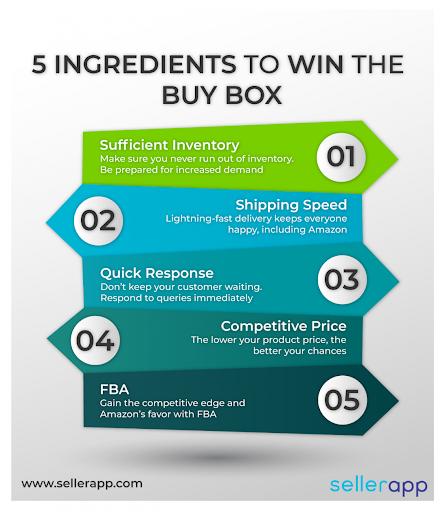
Optimize pricing
Monitor competitor prices at regular intervals and adjust your Amazon pricing strategies accordingly. It helps you to remain competitive in a vast marketplace like Amazon’s. Utilizing repricing tools can be a clever move to automate your pricing strategy for Amazon or you can set up alerts such as SellerApp’s and let experts ensure your Buy Box eligibility.
Leverage FBA
Prime eligibility is a byproduct of enrolling in Amazon FBA. In addition to Prime benefits such as 1-2 day delivery (or same-day delivery), you become eligible for Amazon’s trusted fulfillment network, enhancing customer satisfaction. This translates to a simple message for sellers— FBA is your golden ticket to achieve the Buy Box.
Maintain untainted seller metrics
Focus on delivering excellent customer service, timely shipments, and accurate product descriptions to keep performance metrics at their best state.
Ensure stock availability
Implement robust inventory management practices to make sure there are no stockouts and that they are handled well. Stockouts can potentially impact your Buy Box eligibility in a negative manner, as frequent stockouts give Amazon’s algorithm the impression that your business infrastructure is not ready to accept the volume of orders you’ll receive.
Let’s get practical with pricing your products
Determining the right price for your product isn’t an easy task because your final price decides the profits.
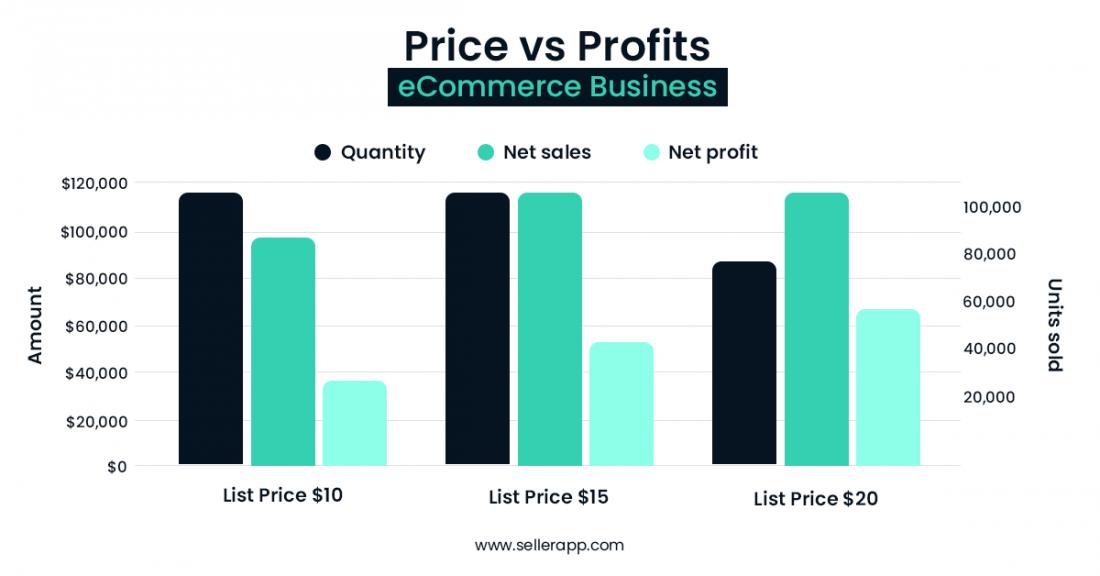
Reducing prices can boost sales
Minor optimization in prices can result in higher conversion rates and an increase in sales
An increase in conversion rates can result in the following:
Increase in daily sales
Increase in profits per additional units sold
Rises customer perceived value that boosts your product click-through rate (CTR)
Rising prices when a competitor runs out of stock
Well, this may not always give an optimal result. However, increasing prices when a potential competitor product goes out of stock results in:
An increase in daily profits and sales
Slight improvement in conversion rates
Increasing prices can reduce AOV but boost profits
If you increase the average selling price (ASP) of your products, your average order value (AOV) may take a hit. However, you can yield better profits.
Here’s an example:
Increasing prices can reduce AOV but boost profits
1: The listing price is $10; you sold more units and got a low net profit
2: The listing price is $15; you sold a similar number of units and got an average net profit
3: The listing price is $20; you sold fewer units compared to the previous two cases but generated higher profits
That’s the impact of pricing on profits.
Increasing prices when inventory is limited
A few sellers increase prices when inventory is limited to avoid the risk of losing organic rankings on Amazon. This can further boost your profits marginally.
Final thoughts
Setting Amazon pricing strategies are crucial for your Amazon business growth. Don’t just follow the crowd or your gut to price your products, as you may end up paying a hefty sum. Find a balance between selling as many units as possible and making better ROI. Therefore, make data-driven decisions to beat market fluctuations and competition.
Dynamic repricing tools, competitor analysis, and stock management help sellers stay ahead. Optimizing for both sales volume and profit margins. Leveraging FBA, maintaining strong seller metrics, and adjusting prices based on demand can significantly impact Buy Box’s chances and long-term success.
Instead of guessing, use data-driven Amazon pricing strategies that align with your goals. Whether through automation or strategic adjustments, smart pricing ensures not just more sales—but sustainable, long-term growth.
Take advantage of a SellerApp’s PPC agency to win the Buy Box, protect your margins, and outprice the competition all at once using our 10+ years of Amazon expertise. Tell us more about your SKUs and revenue, and we’ll get back to you with the perfect Amazon pricing strategy.
Additional Read;
Profit & Loss Statement for Amazon Sellers



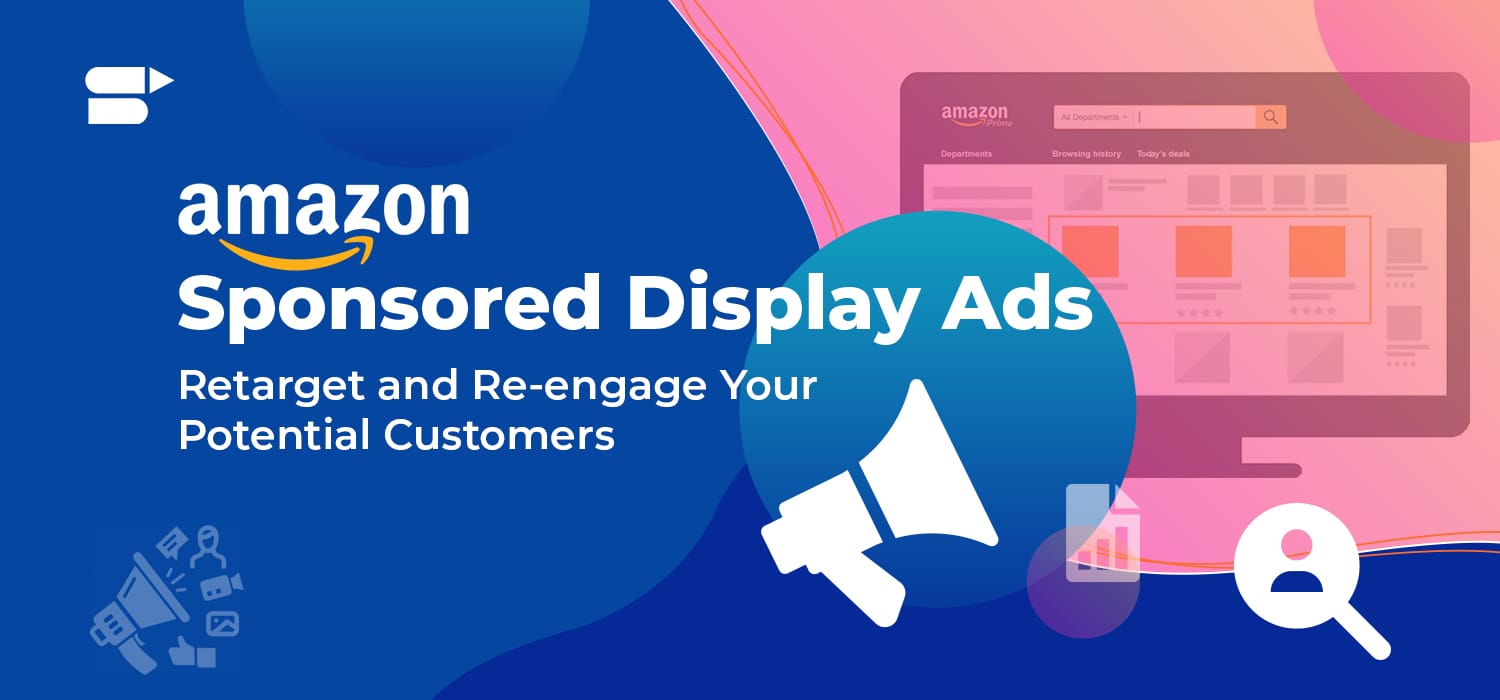
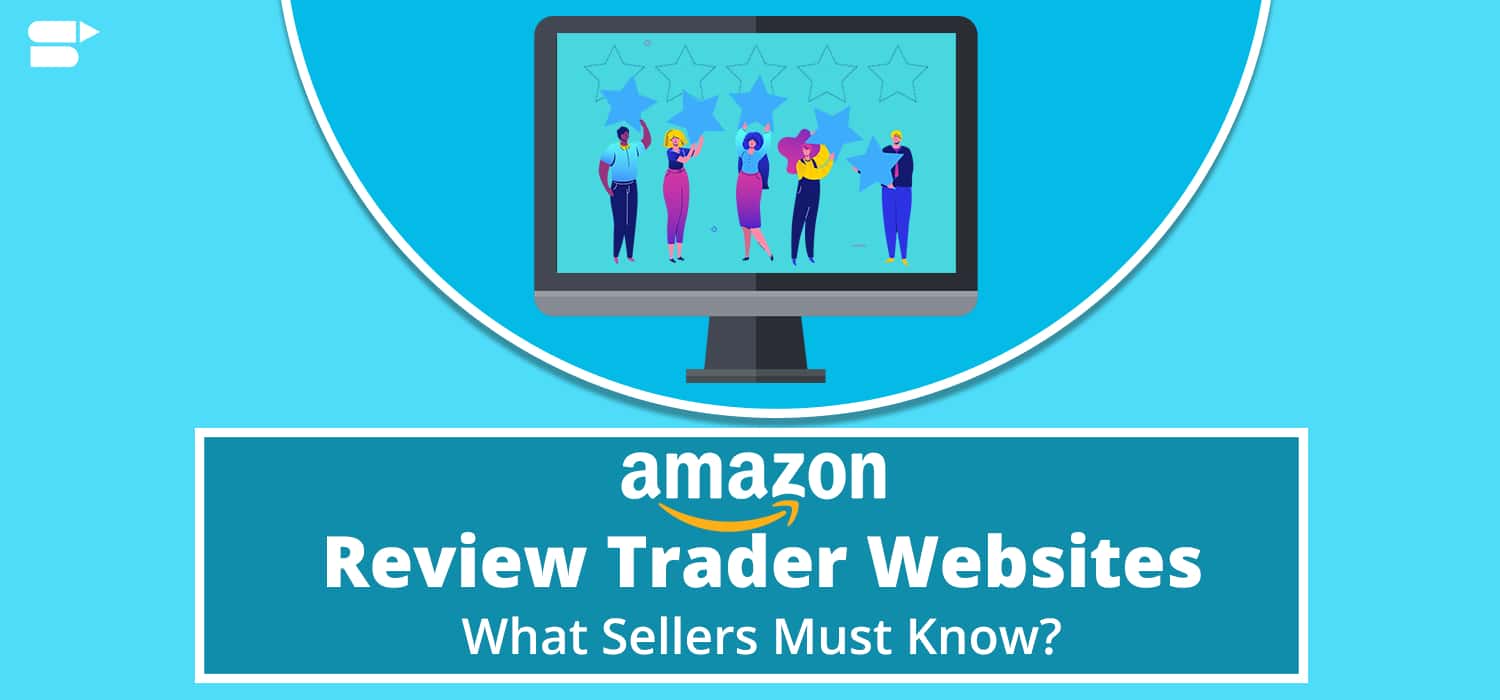


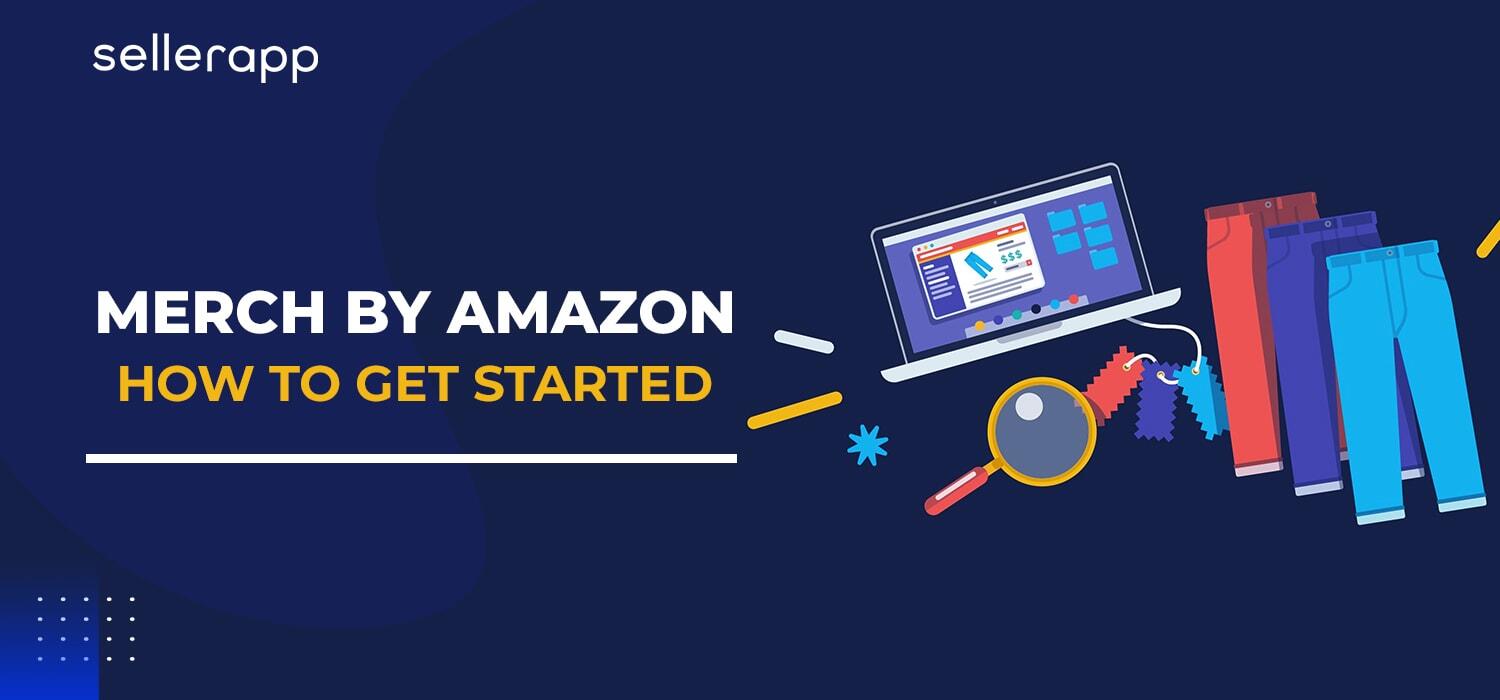

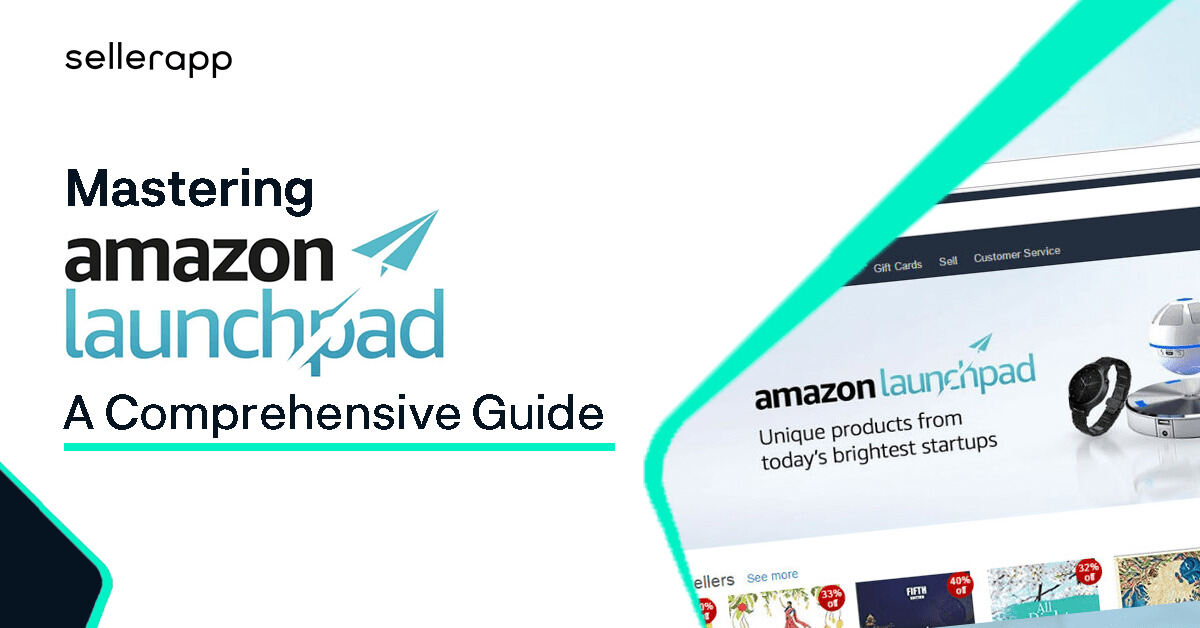
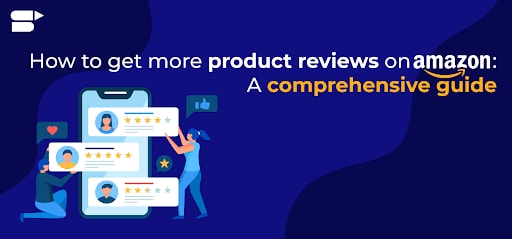
Belinda
December 8, 2022Great Post, Thanks for sharing this amazing blog.
Brianna
December 8, 2022Thank you for being so supportive and insightful!!
Caitlin
December 8, 2022Thank you for the information. It helped a lot.